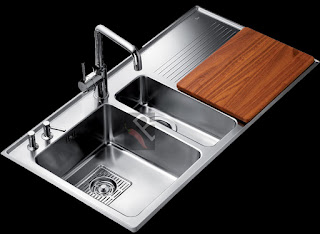Solid glass for kitchen splashbacks
Glass has become a very popular architectural product all over the word since technological innovations in the late 90’s. It can assume any appearance, fulfil numerous functions and is capable of great strength and versatility. The trend towards the increased usage of glass for both exterior and interior applications is global, as architects and designers worldwide continue to push the envelope by using glass in non-traditional ways.
The consumer is offered various decorative glass solutions, from functional decorative glass to just modern art - your imagination is the limit. Coloured glass cladding is commonly referred to as “splashbacks” with it most popular applications being in kitchens and bathrooms. It can however be used almost anywhere you can imagine.
APPLICATIONS:
Splashbacks - Cladding - Art - Screening - Partitions - Reception areas - Tops - Island fronts Corporate logos and signage - Trade show cabinets etc.
Coloured glass cladding creates a feeling of dimension, space and light because of its depth of colour, vibrancy and versatility. It offers a low maintenance, easy to clean, tough, durable and hygienic product. Extensive testing has been carried out and the durability of the coatings which have now been in use around the world.
Typically, all glass splashbacks are 6 mm. This allows the glass to be light enough to be easily handled, whilst maintaining true colour, accuracy and durability. In some applications 8 mm glass creates a stunning feature. The glass is also available in 4 and 10 mm. However, we do not recommend using glass splashbacks thinner than 6 mm.
All of glass cladding products are toughened – which means the glass has been through a process that leaves it 4 -5 times stronger than regular glass. Hence a 6 mm Splashback is as strong as a regular piece of glass around 30 mm thick. The toughening process also leaves the glass resistant to heat which means that it is suitable for use behind a cook top.
Cut-outs for plugs, taps and shelves are simple additions. A simple hole is cut (smaller that the power point, outlet or intercom) to allow the devices to sit cleanly on the surface of the glass. This is done before the glass is toughened. The Glass is applied to the destination surface using a neutral cure, mould resistant adhesive. This adhesive is fast drying and extremely strong. The installation usually takes between 30 minutes & 2 hours and is a clean process
CREATIVE OPTIONS AVAILABLE
Colour coated glass:
This is currently the most popular product. Until now its accessibility and versatility has been very limited. Through innovative technology and technique architects, designers and renovators have access to a huge range of coloured glass products where the possibilities are unlimited. In simple terms it is toughened glass which is back painted, but in fact it is a specialized colour coating which bonds with the glass. The is paint backed by a 10 year manufacturer’s warranty against fading and peeling. Colour selection is available from the Dulux or Plascon Colour charts.
Laminated Glass:
The standard option is Single sided applications where any design or picture can be printed on vinyl and applied to toughened glass. Alternatively, wall paper and fabrics in various textures, patterns and finishes can create a totally unique look.
In Double sided applications 2 pieces of glass are adhered together using the latest lamination technology, encapsulating the various insert materials between safety glass which ensures that the image is visible from 2 sides. As this is one of the most expensive manufacturing processes, it is mostly suitable for commercial applications.
Printing on Glass
Traditionally, glass printing is performed using screen-printing, but now imagery, full colour photos, patterns and artwork can be printed digitally, directly onto the glass where after the glass is toughened thus affixing the ink pigments (specially formulated ceramic ink) into the printed glass surface. We can provide imagery or you can supply us with you own digital files. You can now combine an infinite range of colours with the natural beauty of glass
What to do if, like us, you have fallen in love with this product:
Option 1:
Suppliers normally suggest that clients send a basic drawing with approximate sizes required and the number of cut-outs for plugs and taps. They will then do a provisional quote based on these sizes. If client accepts, he pays a 50% deposit and the supplier will take final measurements on site. This is the most popular option as clients then get a very good idea of the costs involved and whether it suits their budget.
Option 2:
If you do not have measurements and want a professional installer to do the measurement, a call out fee is applicable, which is payable up front. If you accept their quote, this amount is deducted from the final invoice.
As this is the finishing product, measuring can only be done after the kitchen / bathroom is completely installed. Also all counters need to be fitted before measuring and the extractor and plugs needs to have been fitted and removed, so that all the relevant holes are exposed for measuring.
A minimum of 6 – 8 weeks lead time is required for the manufacturing process.
Just a note on Plexiglass sheets. Plexiglass (the sheets) is made from acrylic acid-derived plastic, polymethyl methacrylate or PMMA. It's main use is for advertising boards and displays. There are other industrial uses, but the common types are for advertising. The acrylic reacts with common household cleaners and will show fine cracks after a while. So it is not recommended for use in kitchens as splashbacks.




Comments
Post a Comment